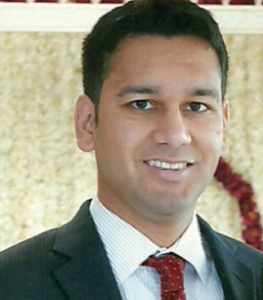
Recently, there has been a move towards transcatheter aortic valve implantation (TAVI) procedures that are more “minimally invasive”. In this interview, Jay Giri (Cardiovascular Medicine Division, Hospital of the University of Pennsylvania, USA) talks to Cardiovascular News about what a minimally invasive TAVI approach involves and its potential risks and benefits.
How would you define “minimally invasive” TAVI?
“Minimalist TAVI” has two major components: fully percutaneous transfemoral access and moderate sedation (as opposed to general anaesthesia). A number of other care patterns are sometimes associated with minimalist TAVI, including: no transoesophageal echocardiography; limitation of central venous access lines, pulmonary arterial lines, and invasive arterial monitoring lines; use of a cardiac catheterisation laboratory as opposed to a hybrid operating room; and avoidance of a stay in an intensive care unit (ICU) during the postoperative period.
Importantly, moderate sedation comes in many forms. This term can refer to isolated local anaesthesia, conscious sedation (usually accomplished with fairly modest doses of benzodiazepines and narcotics), or monitored anaesthesia care with volatile anaesthetics administered and titrated by a trained anaesthetist with the ability to very rapidly convert to general anaesthesia when necessary.
What are the potential benefits of a minimally invasive TAVI approach?
There are several potential benefits of minimalist TAVI. These include less intraprocedural haemodynamic perturbation from general anaesthesia, shorter ICU and hospital stays, earlier patient ambulation, and potentially increased satisfaction for patients and families.
What are the potential risks of a minimally invasive TAVI approach?
The major concerns that arise regard control over the vascular access site and the airway. Percutaneous TAVI must be performed by operators who are comfortable with large-bore access and closure devices. The operators must be facile at recognising and addressing vascular complications endovascularly. From a sedation standpoint, valid concerns exist about the need for emergent intubation in some TAVI cases that are initiated as moderate sedation cases. Emergent intubation can be more difficult than a controlled elective intubation to start the case.
What data are available for such an approach?
Our group has published a comparative analysis of open femoral cut-down vs. full percutaneous transfemoral access (Kadakia, et al. Circ CV Intvn 2014). This analysis revealed no difference in valve academic research consortium (VARC) major or minor vascular complications between the two approaches. Importantly, the two factors that predicted vascular complications (regardless of percutaneous vs. cut-down access) were the degree of sheath oversizing when compared to minimal diameter of the iliofemoral arterial system, and female gender.
There have been several single-centre analyses of moderate sedation for TAVI that show decreased ICU stay, overall hospital stay, and costs without any obvious compromises in procedural success. We recently looked at the US national experience for this process through use of the National Cardiovascular Data Registry’s Transcatheter Valve Therapy database, a mandatory reporting registry for all US TAVI cases. We presented the data as a late-breaking clinical trial at the Society for Cardiovascular Angiography and Intervention’s Scientific Sessions in May 2016 [as reported in the last issue of Cardiovascular News]. We found that moderate sedation is being rapidly adopted with use in about 30% of cases in the most recently available quarters and was associated with slightly lower 30-day mortality (3% vs. 4% for the general anaesthesia arm) after adjusting for greater than 50 factors known to be associated with TAVI mortality. There was a conversion rate of about 6% that closely mirrors our experience at Penn, with 5% of our moderate sedation cases having undergone emergent conversion to general anaesthesia over the past two years. Full publication of these results is currently pending with the manuscript currently in the peer review process.
What further data are needed?
It is probable that randomised trials will not be performed of either percutaneous access or moderate sedation for TAVI, but I do not believe such studies would be a wise use of resources even if they were performed. Based on event rates seen in available observational data, they would necessitate several thousand patients to “prove” superiority of these techniques. Hence, I believe the best way to continue study of these practices is through more nuanced analyses of large datasets including national registries and subanalyses of randomised trials. Such studies could delineate issues related to learning curves associated with the techniques as well as elucidating patient-specific risk factors that make them particularly favourable or unfavourable candidates for a minimalist approach.
Which patients would benefit the most from a less invasive TAVI approach?
This is a great question but it is one that we do not currently know the answer to. When our moderate sedation protocol started at Penn, it was initially reserved for patients with the most cardiopulmonary reserve. After several months, we expanded our programme to include many sicker patients, including those with significant pre-existing lung disease, reasoning that they may stand to benefit most through reduction of the rate of prolonged post-procedure ventilator dependence. Currently we have settled on an approach that is patient-specific and involves a conversation between the TAVI operators and our cardiac anaesthesiologist.
Which patients should not undergo such an approach?
When patients have difficulty lying flat or there are concerns about the airway that could lead to a potentially challenging urgent intubation, we start with an elective general anaesthesia approach. This currently applies to about 10% of our transfemoral cases, with roughly 90% being approached with a moderate sedation approach.












